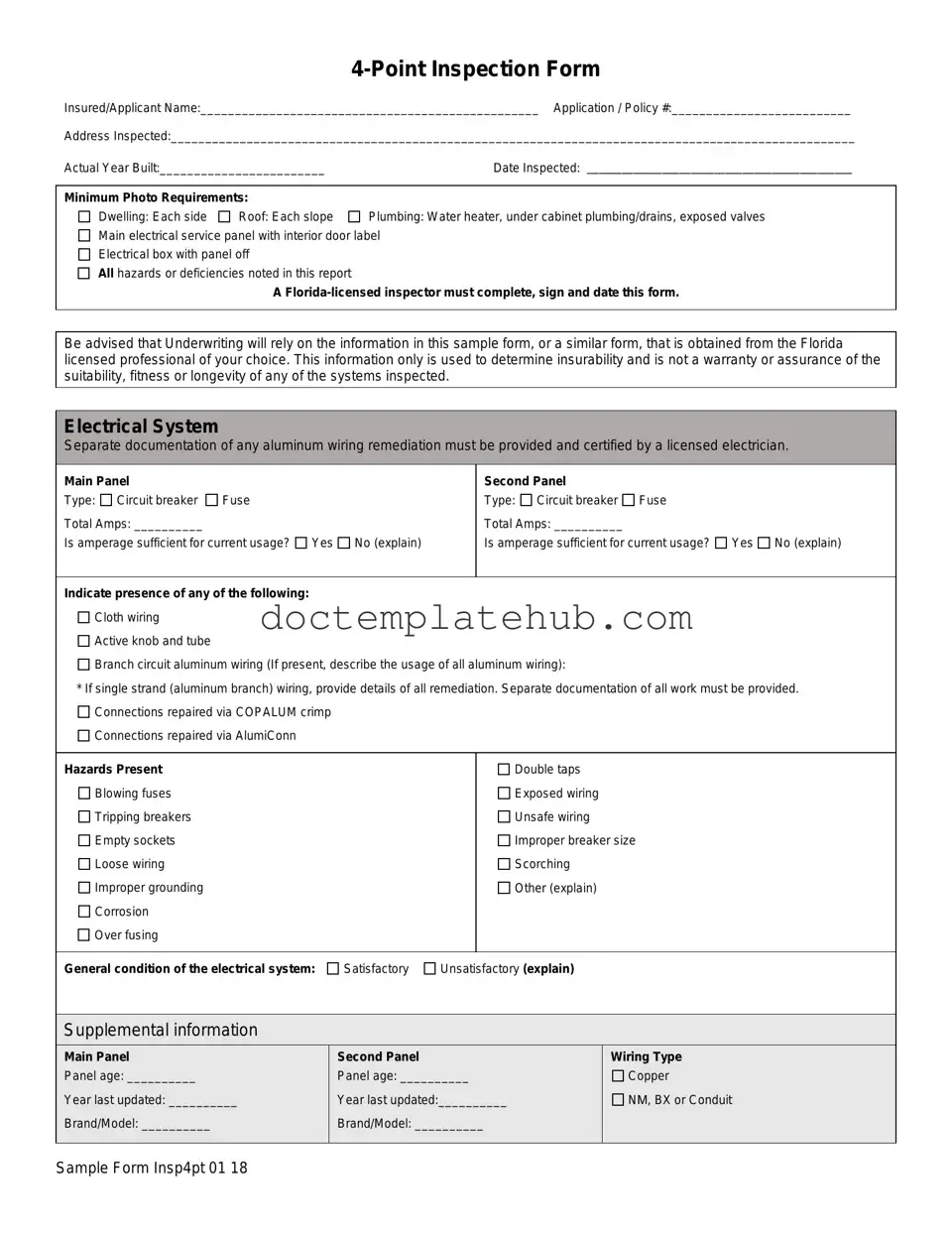What is a 4-Point Inspection Form?
The 4-Point Inspection Form is a document used primarily in Florida to evaluate the condition of four key systems in a home: the roof, electrical, HVAC (heating, ventilation, and air conditioning), and plumbing systems. This form must be completed by a licensed inspector and is essential for determining a property's insurability.
Who can complete the 4-Point Inspection Form?
A Florida-licensed inspector must complete the form. Acceptable professionals include general contractors, residential contractors, building code inspectors, and home inspectors. Each inspector is responsible for certifying the condition of the systems relevant to their trade. For instance, an electrician can only sign off on the electrical section.
What are the minimum photo requirements for the inspection?
Photos are crucial for the 4-Point Inspection Form. The minimum requirements include images of each side of the dwelling, each slope of the roof, the water heater, under-cabinet plumbing, exposed valves, the main electrical service panel with the door open, and any noted hazards or deficiencies. These images help substantiate the inspector's findings.
What happens if a system is found to be unsatisfactory?
If any system is deemed unsatisfactory, the inspector must provide detailed comments regarding the issues. This may include visible hazards, deficiencies, or systems that are not functioning correctly. Such findings can affect the property's insurability and may require repairs before coverage can be obtained.
Is the 4-Point Inspection Form mandatory for all insurance applications?
While the 4-Point Inspection Form is not strictly mandatory, any inspection report submitted must include at least the same level of detail as this form. It ensures that underwriting can accurately assess the property's condition and determine insurability.
What should agents do before submitting the 4-Point Inspection Form with an application?
Agents must thoroughly review the 4-Point Inspection Form to ensure that all requirements are met. They should confirm that the inspection is complete, signed, and dated by a licensed inspector. Additionally, agents should not submit applications for properties with any systems that are not in good working order or that have existing hazards or deficiencies.
